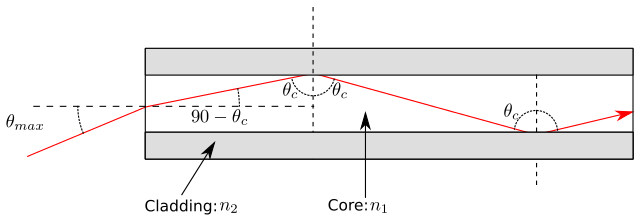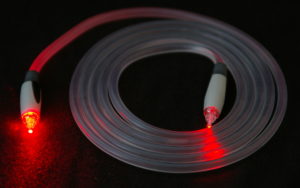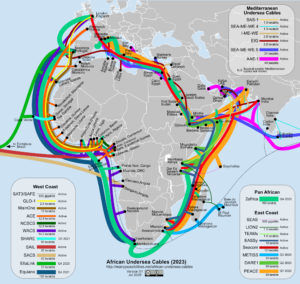Intro
Introduction to Optical Data Transmission
Using light to transmit signals is nothing new. Signal fires and smoke signals have been used for thousands of years. Because light travels incredibly fast signals could be sent from place to place very quickly.
Native Americans and other cultures used smoke signals and the Chinese signal tower system along the Great wall of China allowed warnings of potential invasion by the Mongolians to be sent back to the government long distances of up to 500km in day.
Ships also used semaphore signals and signal lamps to send Morse code between ships in visible distance of each other.
As the limitations of electrical data transmission became apparent in the middle of the 20th century, research into the alternatives began. By 1977 the first telephone traffic was being routed through a fiber optic connection.
Fiber Optics
How Fiber Optics Works
Fiber optics works by send light along glass fiber cables. Data is sent in binary pulses using laser light and the light travels from one end of the cable to the other, bouncing along the internal of the cable through a physics phenomenon known as total internal reflection.
Multiple light signals using different wavelengths can be sent at the same time, which allows for higher bandwidth and full duplex transmission – this is known as multiplexing.
The current maximum bandwidth for fiber optical cables is 10 GB/s.
Due to total internal reflection the cables do not suffer with interference or crosstalk and signal degradation over a much greater distance when compared to electrical cables.

Total Internal Reflection. Source: Wikipedia
Video
How Fiber Optics Works – Video
Undersea Cables
Fiber Optic Undersea Cables
Fiber optical cables now form the backbone of international internet networks, handling most global traffic. Fiber optic cables and can handle huge amounts of data compared to cable networks and have the advantage of only requiring signals to be booster every 100km underwater using a repeater. Fiber optic cables are still vulnerable to damage, especially from shark attacks and ship anchors.
Pros & Cons
Advantages of Fiber Optic
- More data can be sent per cable, meaning much higher bandwidth than through electrical cables
- The glass cables don’t corrode as easily as copper cables
- Reduced signal degradation means that fewer repeaters are required for long distance transmission and there it is cheaper at scale
- Fiber optic cables are more secure than copper cables as you have to break the cable to eaves drop.
Disadvantages of Fiber Optic cables
- Fiber optic networking devices are currently more expensive than ethernet devices
- The cables are more fragile than ethernet cables in home networks.
- Fiber optic networking devices are less common than ethernet and therefore aren’t compatible with most exisiting networking devices
Li-Fi
Note: Li-fi is not currently mentioned on the iGCSE specification but it’s an interesting technology so I’m adding it here!
Limitations of Wifi
Wi-fi networking in homes and offices is incredibly popular, however it does have a number of disdvantages:
- Interference between different networks, especially in apartment blocks, is becoming a increasing problem.
- Wi-fi is limited in the spectrum it can use and there has a limited maximum transmission speed.
- It is also not very secure and easy to hack because the signals leak outside of the building.
This has meant that alternatives to radio based wireless networks are being developed. One such technology is Li-Fi.
Li-Fi Networking
Li-Fi is a technology where data is sent using light from the invisible portion of the spectrum (usually ultraviolet light). This has a number of advantages over Wi-fi as there is no interference between different networks and it is easier to ensure network security by making windows opaque.
It also has a number of advantages in special use areas.
Quiz
Resources
Resources
Past Paper Questions
I couldn’t find any so yeah…
<< Electrical Data Transmission | Radio Wave Data Transmission >>


